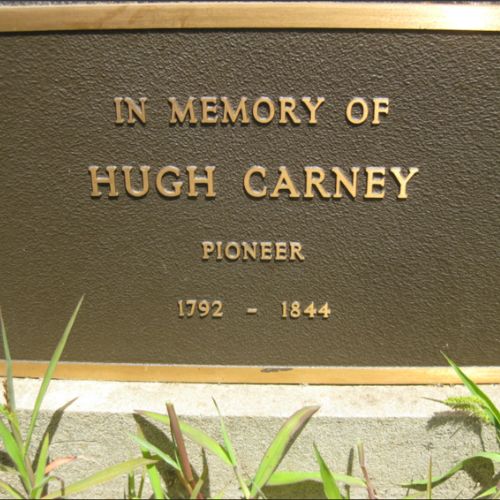1792 – 1844
Father
James Carney
Mother
Elizabeth Carty
Siblings
No Known
Married
Mary Ann Regan
Children
Martin, John, Hugh, Catherine, James, Daniel, Patrick, Mary
Hugh’s Life
Hugh was born in Roscommon, Leitrim, Ireland in 1792 to James Carney and Elizabeth Carty. Little is known about his parents other than the fact that James died the same year as Hugh was born at the age of 20. It is not known if his mother re-married.
Hugh married Mary Anne Regan, she was 15 at the time, in 1818 at Leitrim, Ireland, their first son, Martin was born in 1818. Hugh was described as being 5 feet 7 and ½ inches tall, with a dark ruddy complexion, brown hair and grey eyes. His calling was stated as ‘herdsman’.
Hugh was born into troubled times being a Catholic at that time in Ireland. Following the Irish Rebellion of 1798, English Landlords became more impatient with Catholics and attempted to move them out of their tenancies and move Protestants onto their land.
The fate of Hugh and his family was undermined by Lord Lucan (Second Earl) who, along with most aristocrats in Ireland, preferred to anglicise Ireland and threw out their Catholic tenants and workers. The Irish Catholics were forced to leave their homes and live under hedgerows, they even established hedgerow schools for their children. If they returned their homes for warmth their homes were burned. This became more rigorous during the potato famine of 1845.
In 1820, Hugh became rebellious. He and a few friends attended an unauthorised meeting, when the soldiers came to disperse the meeting, his friends urged him to run, he replied ‘I will not run from the red coats’. He was then arrested, tried and convicted of insurrection, a penalty of 14 years in the colonies at the Roscommon Assizes on July 6, 1920.
Hugh was marched in chains from Roscommon to Cork where he was incarcerated either in the jail or on a hulk until 16 July 1821 when he sailed on the John Barry, in chains, to New South Wales. On arrival in Sydney, he sailed up the river to Parramatta after only a day and was marched once again to Bathurst. Hugh Carney was assigned to Magistrate Robert Lowe JP, who had substantial land holdings in the Bringelly area and who also gained substantial land grants in the Bathurst and Mudgee areas.
Hugh gained a Ticket of Leave in 1829. Prior to the Ticket of Leave he applied to have Mary and Martin given free passage to join him in New South Wales. This was granted and Mary and Martin arrived on the Sir Joseph Banks in October 1828. Mary and Martin (aged 10) walked from Roscommon to Cork, a distance of 260 miles, to embark on their voyage to New South Wales.
In 1834 Hugh gained his Certificate of Freedom. He leased and occupied 640 acres of land from William Lawson. Hugh and Martin cleared the land then cultivated it with a single furrow plough drawn by two horses.
Trouble was not completely over for Hugh. On 2 December, 1842 Hugh and Martin were in Bathurst goal, charged with stealing 2 cows and 4 yearlings, but were released on bail. On 27 March, 1843 they were tried at Bathurst Assizes before Chief Justice, Sir James Dowling, and acquitted by the jury “after a few minutes consideration”.
Hugh died in October 1844 at Campbell’s River at the age of 52 leaving his wife with a very young family (Australian born). Martin had married in 1842 and soon had his own family to look after. Mary married again in 1946.
Hugh was buried in the Catholic Cemetery at Bathurst (which later became railway yards).
Hugh was recognised as Pioneer, a remembrance plaque in Cowra cemetery commemorates Hugh as Pioneer of the district.
Authored by Leah Burnheim in collaboration with Paula Waterford and Paul Waterford

